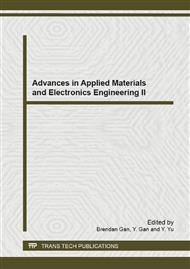p.551
p.555
p.559
p.563
p.567
p.571
p.575
p.579
p.583
Word Segmentation Method Based on Conditional Random Fields in China's Stock Market Arbitrage Analysis: A Case Study of Shanghai a Share Market
Abstract:
In economic circles debating the efficient market hypothesis , the price volatility of the stock market, news-related is an indisputable fact . In the 21st century , information obtained through traditional media such as newspapers , television, radio may have lagged effects . This article via computer algorithm automatically in a neutral site to obtain information based on conditional random field segmentation method , word processing information , stock code search to identify the corresponding positive information , analog to the opening price bid , after open achieved a good excess returns .
Info:
Periodical:
Pages:
567-570
Citation:
Online since:
April 2013
Authors:
Price:
Сopyright:
© 2013 Trans Tech Publications Ltd. All Rights Reserved
Share:
Citation:


